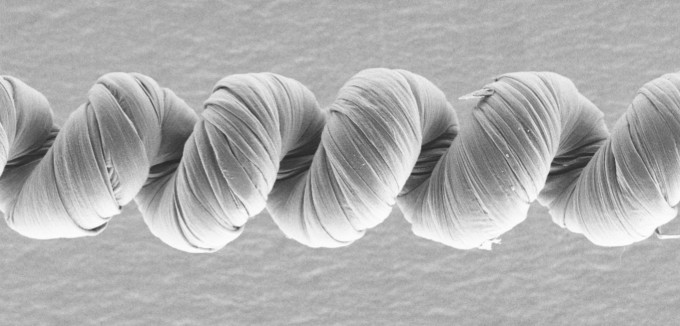 Hetao Chu1,2, Xinghao Hu1,3, Zhong Wang1,4, Jiuke Mu1, Na Li1,5, Xiaoshuang Zhou6, Shaoli Fang1, Carter S. Haines1,7, Jong Woo Park8, Si Qin9, Ningyi Yuan6, Jiang Xu3, Sameh Tawfick10, Hyungjun Kim11,12, Patrick Conlin11, Maenghyo Cho11,12,Kyeongjae Cho11, Jiyoung Oh1, Steven Nielsen4, Kevin A. Alberto4, Joselito M. Razal9,
Javad Foroughi13, Geoffrey M. Spinks14, Seon Jeong Kim8, Jianning Ding3,6*,Jinsong Leng2*, Ray H. Baughman1*
Hetao Chu1,2, Xinghao Hu1,3, Zhong Wang1,4, Jiuke Mu1, Na Li1,5, Xiaoshuang Zhou6, Shaoli Fang1, Carter S. Haines1,7, Jong Woo Park8, Si Qin9, Ningyi Yuan6, Jiang Xu3, Sameh Tawfick10, Hyungjun Kim11,12, Patrick Conlin11, Maenghyo Cho11,12,Kyeongjae Cho11, Jiyoung Oh1, Steven Nielsen4, Kevin A. Alberto4, Joselito M. Razal9,
Javad Foroughi13, Geoffrey M. Spinks14, Seon Jeong Kim8, Jianning Ding3,6*,Jinsong Leng2*, Ray H. Baughman1*
1) Alan G. MacDiarmid NanoTech Institute, University of Texas at Dallas, Richardson, TX 75080, USA
2) Center for Composite Materials and Structures, Harbin Institute of Technology (HIT), Harbin150080, China.
3) Institute of Intelligent Flexible Mechatronics, Jiangsu University, Zhenjiang 212013, China.
4) Department of Chemistry and Biochemistry, University of Texas at Dallas, Richardson,TX 75080, USA.
5) MilliporeSigma, Materials Science, Milwaukee, WI 53209, USA.
6) Jiangsu Collaborative Innovation Center of Photovoltaic Science and Engineering, Changzhou University,Changzhou 213164, China.
7) Opus 12 Incorporated, Berkeley, CA 94710, USA.
8) Center for Self-Powered Actuation, Department of Biomedical Engineering, Hanyang University, Seoul 04763,South
Korea.
9) Institute for Frontier Materials, Deakin University, Waurn Ponds, Victoria 3216, Australia.
10) Department of Mechanical Science and Engineering, University of Illinois Urbana-Champaign,Urbana, IL 61801, USA.
11) Department of Materials Science and Engineering, University of Texas at Dallas, Richardson, TX 75080, USA.
12) Department of Mechanical and Aerospace Engineering, Seoul National University, Gwanak-gu, Seoul 08826, The Republic of Korea.
13) Faculty of Engineering and Information Sciences, University of Wollongong, Australia, Wollongong, New South Wales
2500, Australia.
14) Intelligent Polymer Research Institute, Australian Institute for Innovative Materials, University of Wollongong, Wollongong, New South Wales 2522, Australia.
*Corresponding author.E-mail: dingjn@ujs.edu.cn (J.D.); lengjs@hit.edu.cn (J.L.); ray.baughman@utdallas.edu (R.H.B.).
원문 링크 : https://www.science.org/doi/full/10.1126/science.abc4538
Abstract
Success in making artificial muscles that are faster and more powerful and that provide larger strokes would expand their applications. Electrochemical carbon nanotube yarn muscles are of special interest because of their relatively high energy conversion efficiencies. However, they are bipolar, meaning that they do not monotonically expand or contract over the available potential range. This limits muscle stroke and work capacity. Here, we describe unipolar stroke carbon nanotube yarn muscles in which muscle stroke changes between extreme potentials are additive and muscle stroke substantially increases with increasing potential scan rate. The normal decrease in stroke with increasing scan rate is overwhelmed by a notable increase in effective ion size. Enhanced muscle strokes, contractile work-per-cycle, contractile power densities, and energy conversion efficiencies are obtained for unipolar muscles.